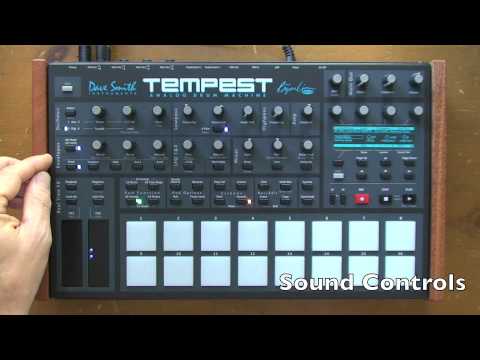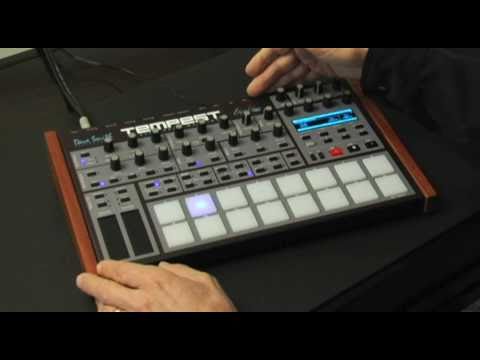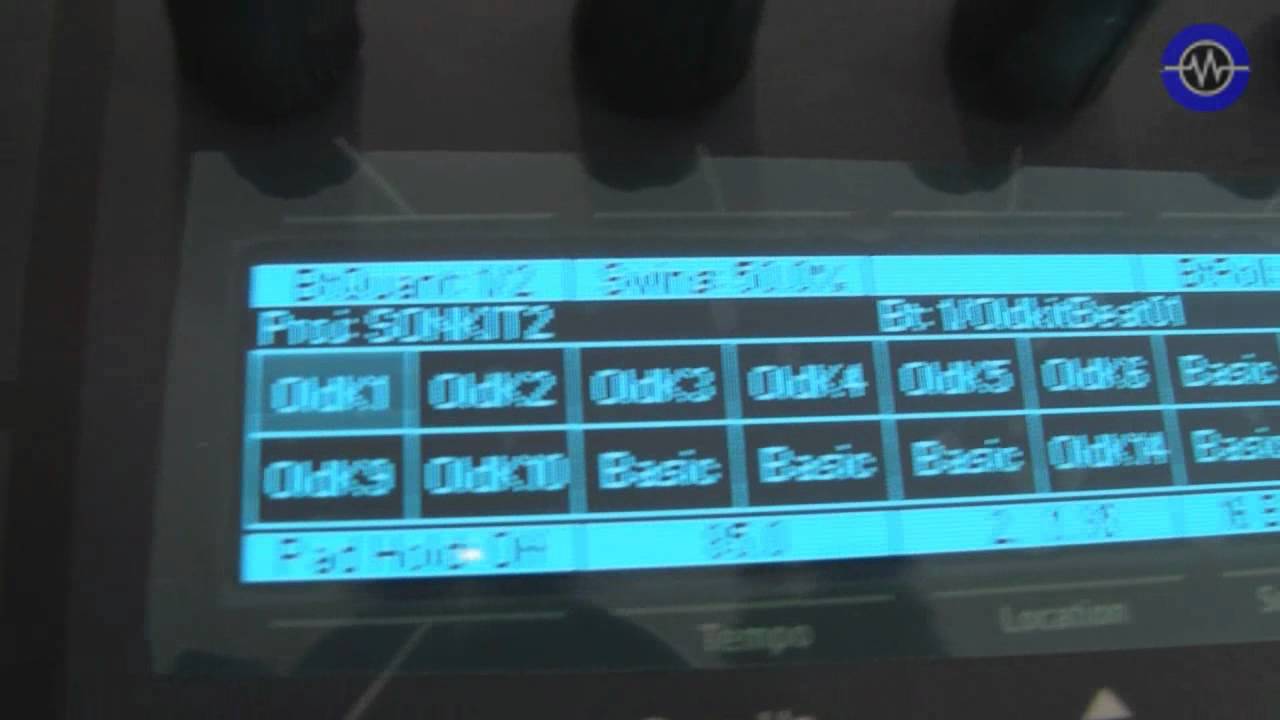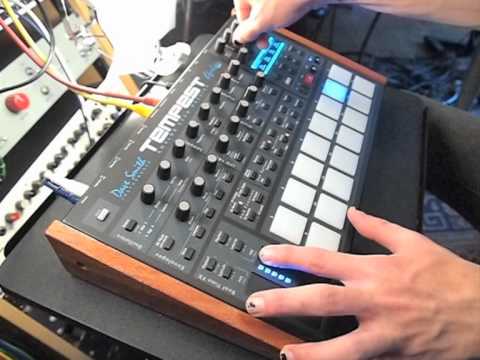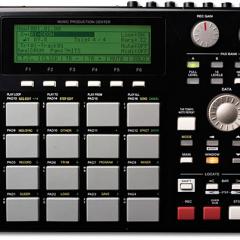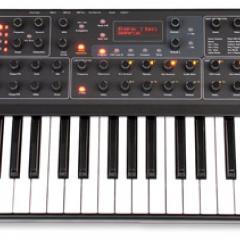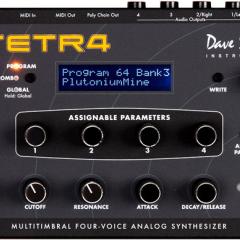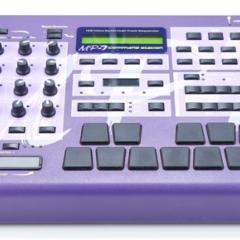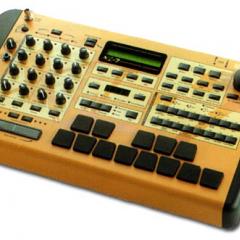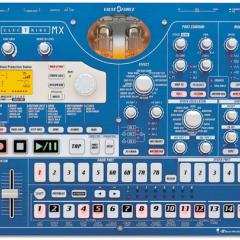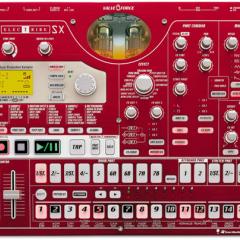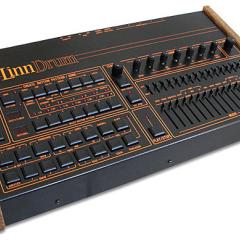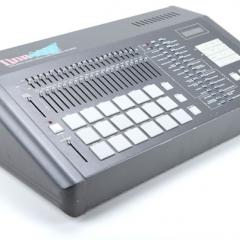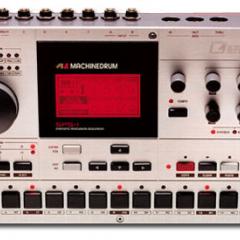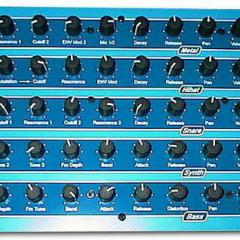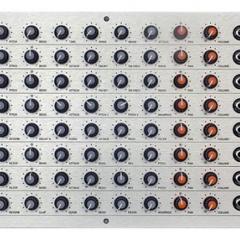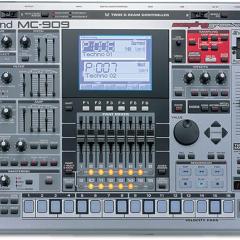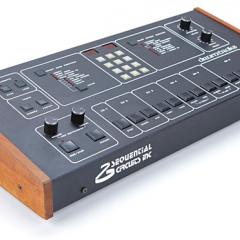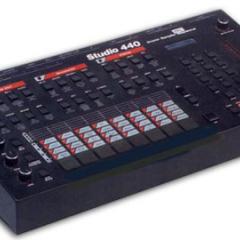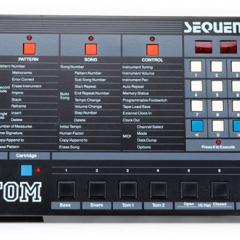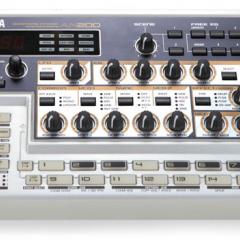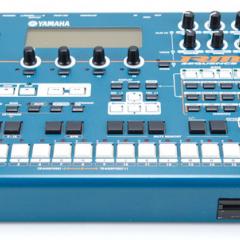Dave Smith Instruments Tempest
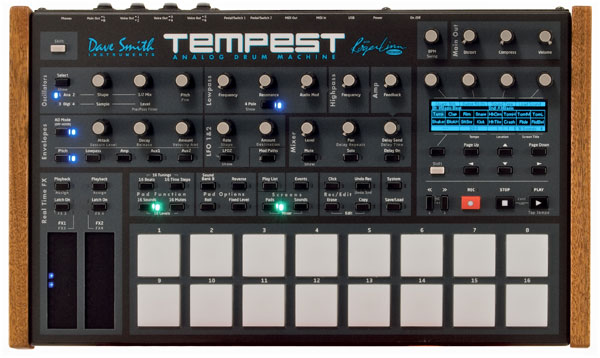
The Tempest from Dave Smith Instruments is a collaboration between Dave Smith and Roger Linn. Dave Smith is the mastermind behind the Sequential Circuits Prophet 5, MIDI, and the current DSI range. Roger Linn is the brain behind the Akai MPC, the LinnDrum, and more current offerings like the AdrenaLinn filter FX units. What they came up with draws on the strengths of each to create a hybrid of drum machine and synthesizer. In fact, the Tempest can be seen as a drum machine, drum synthesizer, polyphonic synth, and an analog groove-box—all in one desktop unit.
The Tempest includes samples of classic drum machines and acoustic kits. But getting your money's worth really means digging into the analog synth engine where you'll find everything from classic sounds to radically different new sounds. Unlike classic analog drum machines, the user is not limited to a narrow range of basic editable parameters like pitch and decay. The Tempest is a full-blown synthesizer, so each drum sound can be anything from a traditional percussive sound (like a clap) to a soft analog synth pad. With 32 sounds available at a time (accessible through the 16 pads in two banks), the only limit is its six voices of polyphony. There have been hints at the possibility of allowing user samples, but no concrete announcements have been made as of this writing.
Taking a look at the synth engine, anyone who has used another DSI synth will recognize a similar structure: classic subtractive synthesis with a deep mod matrix. Each of the six voices has two analog oscillators (DCOs) and two digital oscillators, producing Prophet '08 waveforms and drum samples, respectively. The Curtis analog low pass filter can be set to 12 or 24 dB/oct, allowing for classic 80's sounds but also tones that hint at the 70's. The high pass filter is also extremely effective in shaping the tone. Taking things even further, the Tempest offers two LFOs, five ADSR envelopes, two hardwired to the VCA and low-pass filter, the others freely assignable. To add even more versatility, no fewer than eight modulation paths are provided.
But the emphasis here is on beats. The 16 pressure and velocity sensitive pads can be used in four different modes: 16 Beats to select different drum patterns, 16 Sounds to edit each sound patch assigned to the pad, 16 Time Steps for sequencing, and 16 Mutes to silence individual parts in real-time. Recording patterns can be done via the pads or with an external MIDI controller, which is especially useful for synth pads or melodic lines (although with the current OS 1.2.0.8 it's only possible to record one note at a time). The Roll button (a stutter effect with assignable ratio) and Reverse (for reverse envelopes that provide convincing backwards tape effects) provide for dynamic patterns. Both can be triggered in real-time.
For even more real-time control, there are two assignable "FX" slide controllers that can be assigned to four different parameters per project—not just for effects but also parameters like pitch, resonance, pan, oscillator volume, LFO amount, etc. Available for use on one sound or the whole beat, they can be used in latching or non-latching mode. The slider movements can also be recorded for a single sound pad but not the whole beat.
For those used to all-digital groove-boxes, the effects provided might seem meager. But Roger and Dave wanted to keep the unit's path analog so no digital reverb or other effects were added. With the choice of stereo or six individual voice outputs to feed into effects units, they have provided a lot of flexibility to how the user can feed the voices into their own effects boxes. The effects that are on board, however, are quite useful. The compressor does a great job at tightening up the sound, even if it does add a bit of analog hiss (some might just like that). The Distortion can add a bit of grit or a lot of harmonic squelching—but is all analog for some aggressive richness. Finally, there is Delay, which is a MIDI delay, as opposed to a digital or analog circuit. So the audio signal is not being delayed; MIDI is repeating the notes. Those expecting a traditional delay will probably be disappointed, but MIDI delay can be its own unique effect and can be useful for rhythmic effects.
The layout is straightforward and the amount of knobs on the control panel provide easy access to real-time control. The knobs feel solid and the sliders are easy to master. The only thing that might slow down real-time performance is the Shift button. One is provided at the top left and another below the display. Pushing Shift changes the function of many of the knobs and some of the buttons. These dual-function knobs and buttons are ones that are less likely to be used in performance, but players who might want to adjust the Pan and Delay Repeat parameters in real-time, as an example, will have to remember to use the Shift button. Obviously, it's there to maximize the use of real estate, but it does take getting used to. It also takes time to remember where the buttons are—not unusual for a feature-packed unit, but their size and the font size can make finding the right button difficult in dim lighting, especially while trying to toggle the Shift button in addition to another button or knob.
The OLED display screen is a tad on the small side but reads clearly. It shows a graphic display while programming of things like the ADSR envelopes, oscillator pitch, pulse wave shape, or the names of the sounds assigned to each pad, etc. It also shows the values of parameters like the attack or LFO rate while adjusting them, so it helps users dial in precise changes. More complex parameters like the modulation assignments require a bit of menu diving, as is to be expected, but it's pretty difficult to get lost. However, a firm grasp of synthesizer architecture will be valuable in creating new sounds and navigating the menus to make the most of the programmability.
Loading up a project gives you 16 beats or patterns to choose from. You can use those to line up individual beats or combine those patterns to create songs. Unlike many groove-boxes, however, there is no "Song" mode. The emphasis is on real-time control rather than pre-programmed MIDI sequencing. Loading projects or beats is the only workflow on the device that seems a bit lacking. For a machine built with an eye on performance, scrolling through menus to get to the next project seems a bit slow. But once in the project, the user can easily select the individual patterns with the pads. Unlike many groove-boxes, there are no "kits" to choose from either. The user is free to choose from or create any sound and assign it to any of the 32 slots.
Last but definitely not least, the Tempest has its own sound. Whether using the samples or the analog oscillators, the sound can definitely bring back the 80's, whether it's clean dance-floor beats or dirty underground rhythms. But it can also go places that no vintage drum machine could—glitchy clicks, thick bass lines, icy pads and more. The sounds will be familiar to those who have used other DSI synths. The depth of programming options make the Tempest both a robust analog drum-synth and poly-synth. Roger Linn is known as the king of swing when it comes to drum machines, and the Tempest is no different. In addition to the fine swing implementation, the latest OS also allows for odd time signatures, making this a truly unique analog drum machine experience.
Demos & Media
